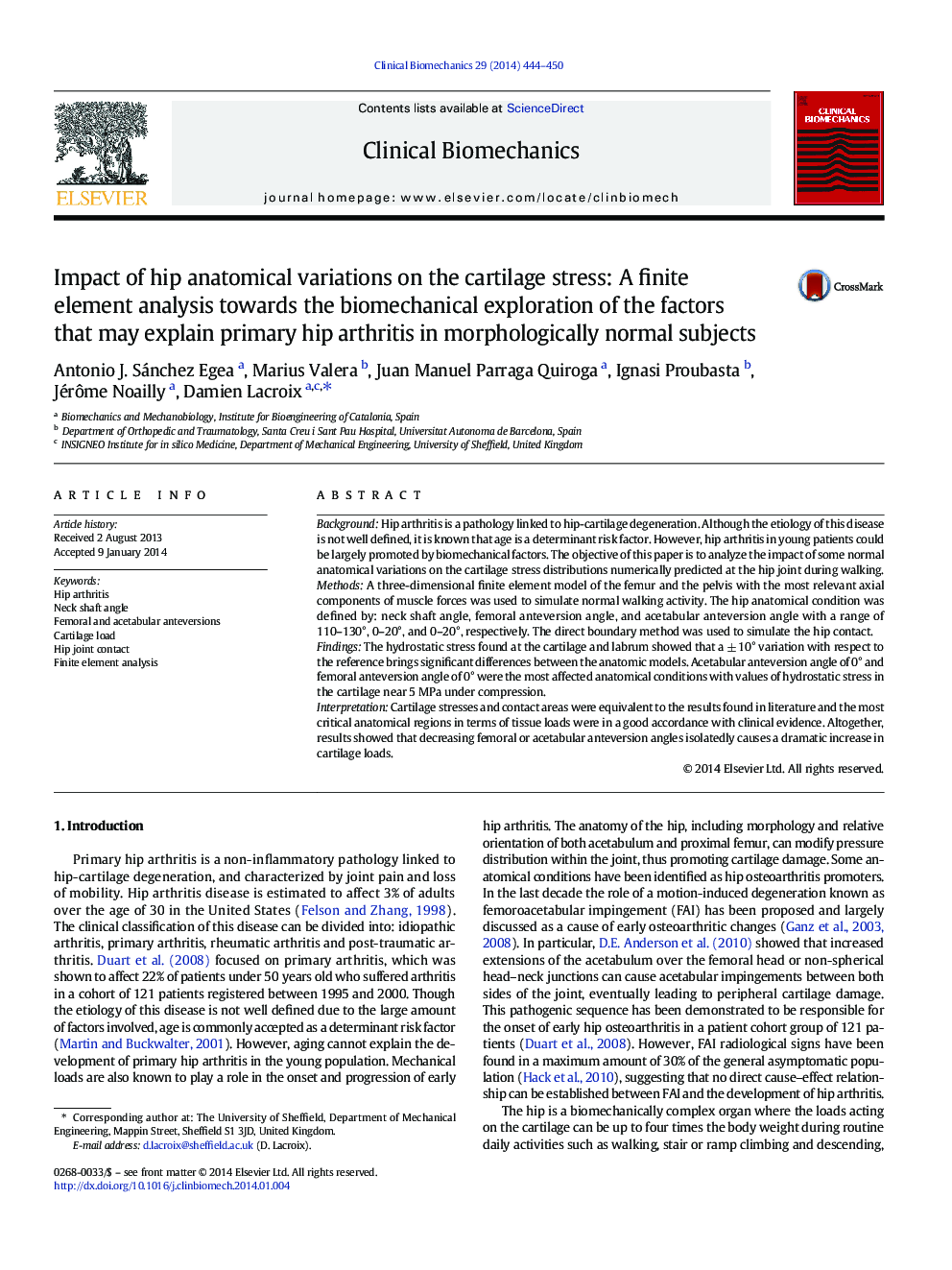| کد مقاله | کد نشریه | سال انتشار | مقاله انگلیسی | نسخه تمام متن |
|---|---|---|---|---|
| 6204861 | 1264925 | 2014 | 7 صفحه PDF | دانلود رایگان |
BackgroundHip arthritis is a pathology linked to hip-cartilage degeneration. Although the etiology of this disease is not well defined, it is known that age is a determinant risk factor. However, hip arthritis in young patients could be largely promoted by biomechanical factors. The objective of this paper is to analyze the impact of some normal anatomical variations on the cartilage stress distributions numerically predicted at the hip joint during walking.MethodsA three-dimensional finite element model of the femur and the pelvis with the most relevant axial components of muscle forces was used to simulate normal walking activity. The hip anatomical condition was defined by: neck shaft angle, femoral anteversion angle, and acetabular anteversion angle with a range of 110-130°, 0-20°, and 0-20°, respectively. The direct boundary method was used to simulate the hip contact.FindingsThe hydrostatic stress found at the cartilage and labrum showed that a ± 10° variation with respect to the reference brings significant differences between the anatomic models. Acetabular anteversion angle of 0° and femoral anteversion angle of 0° were the most affected anatomical conditions with values of hydrostatic stress in the cartilage near 5 MPa under compression.InterpretationCartilage stresses and contact areas were equivalent to the results found in literature and the most critical anatomical regions in terms of tissue loads were in a good accordance with clinical evidence. Altogether, results showed that decreasing femoral or acetabular anteversion angles isolatedly causes a dramatic increase in cartilage loads.
Journal: Clinical Biomechanics - Volume 29, Issue 4, April 2014, Pages 444-450
